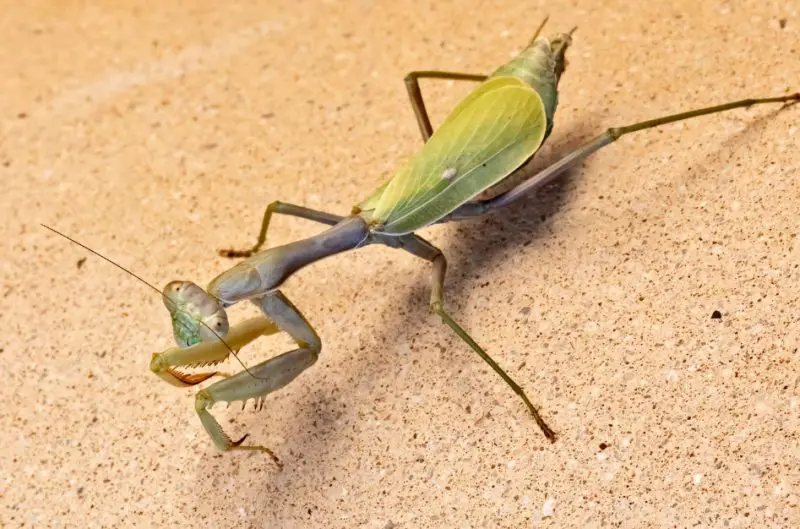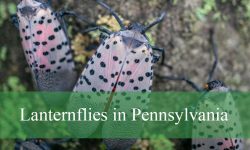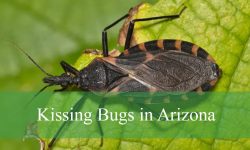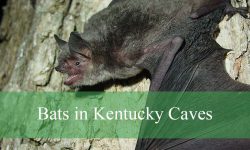Praying mantises stand out as some of the most intriguing insects found throughout California’s wide range of habitats. Their triangular heads, large eyes, and iconic front legs held together as though in prayer make them instantly recognizable. Yet their appearance is only the beginning of their remarkable story.
California’s coastal zones, deserts, valleys, and suburban gardens host several mantis species that display surprising intelligence, impressive hunting skills, and behaviors that seem almost otherworldly. Many residents see them perched on flowers or camouflaged among leaves without realizing how complex their lives truly are.
This article uncovers why praying mantises in California are so fascinating. Their biology, behaviors, hunting techniques, and ecological roles reveal an insect that is far more advanced than most people expect.
Understanding Praying Mantises in California

What California Mantises Really Are
Praying mantises belong to the order Mantodea. California hosts both native and introduced species. Native mantises include the California mantis (Stagmomantis californica) and bordered mantis (Stagmomantis limbata). Introduced species such as the European mantis appear widely in gardens and agricultural fields.
All mantises share common features. Their elongated bodies, raptorial forelegs, and rotating heads make them skilled hunters. Their vision is unusually sharp for insects which contributes to their success in California’s changing environments.
Why Mantises Thrive in California
California’s mild climate, long warm seasons, and diverse plant life create ideal conditions for mantises. They need extended periods of warmth for hunting and growth. Flower-rich gardens and agricultural regions offer abundant insect prey.
Even urban areas support mantis populations because they provide shelter, artificial lighting that attracts prey, and ornamental plants that mimic their natural camouflage.
Where Mantises Live
Mantises inhabit coastal scrub, oak woodlands, desert fringes, suburban yards, agricultural fields, and grassy meadows. They prefer vegetation that allows them to sit, stalk, and ambush prey. Their camouflage works differently depending on the species.
Green mantises blend with garden plants while brown mantises match dry California vegetation.
The Unique Anatomy That Makes Mantises Fascinating
Rotating Triangular Heads
Praying mantises can rotate their heads nearly 180 degrees. This ability is rare among insects. Their head movement allows them to track prey from multiple angles and detect approaching predators.
Large compound eyes give them a wide field of view. Mantises also possess simple eyes that detect light changes which help them sense motion.
Raptorial Forelegs
Their front legs act like spring-loaded traps. A mantis waits motionless until prey wanders close then snaps its legs shut with astonishing speed. Spikes along the edges hold prey securely while the mantis begins feeding.
This adaptation makes them one of the most formidable ambush predators in the insect world.
Camouflage
Mantises mimic leaves, branches, dry twigs, or even flowers. In California’s dry summers brown mantises blend perfectly with dried grasses. Green mantises remain hidden in lush gardens or irrigated landscapes.
Their coloration shifts slightly after molting which helps maintain effective camouflage.
Hidden Behaviors You Never Knew
Slow Motion Stalking
Mantises move carefully when approaching prey. They sway gently to mimic plant movement in the breeze. Each step is measured to avoid detection. This slow, deliberate movement makes them difficult for prey insects to recognize as threats.
Precision Ambush
When a mantis strikes, it does so with remarkable accuracy. Their attack speed occurs in fractions of a second. Many prey insects do not react before being captured.
Aerial Skills
Some mantises glide or leap from one plant to another. Juvenile mantises often jump between leaves to escape predators. Adults use short flights to reposition themselves during hunting.
The Visual Intelligence of California Mantises
Depth Perception
Mantises have binocular vision. They judge distance with surprising accuracy. This allows them to strike prey positioned at exact distances. Their ability to measure space rivals that of some vertebrates.
Tracking Movement
Mantises track moving objects smoothly. Their head follows prey with a level of focus rarely seen in insects.
Response to Light
Artificial lighting in California’s urban areas attracts insects. Mantises take advantage by positioning themselves near porch lights or garden lamps where prey gathers.
Hunting Habits in California Landscapes
Daily Hunting Patterns
Mantises hunt during daylight but remain active into the early evening. Their activity increases during warm sunny days. In cooler coastal regions they may wait for midmorning warmth before becoming active.
Prey Range
Mantises consume flies, moths, bees, butterflies, beetles, grasshoppers, and even small lizards in some cases. Their flexible diet makes them effective predators across multiple environments.
Hunting From Perches
Mantises choose high vantage points such as tall grasses or flower stems. From these perches they scan for movement. This strategy works especially well in vineyards, orchards, and gardens.
Mating Habits and Famous Behaviors
Courtship Signaling
Males approach females cautiously using slow movements and specific antenna signals. Females respond by adjusting posture. This communication helps reduce the chance of aggression.
Sexual Cannibalism
In some cases females may consume males after mating. This behavior is not as common as people believe. Cannibalism often occurs when females lack nutrients or when males approach too quickly.
Egg Laying
Females create foam-like ootheca cases which harden into protective capsules. These oothecae contain dozens of eggs. They attach them to branches, fence posts, garden stakes, or plant stems.
California winters allow these egg cases to survive until spring.
The Life Cycle of California Mantises
Egg Stage
Eggs overwinter in hardened oothecae. These cases protect developing embryos from cold and predators.
Hatching
Tiny nymphs emerge in spring. They resemble miniature adults but lack wings. Hundreds may hatch from a single case though only a fraction survive.
Growth Through Molting
Nymphs molt multiple times as they grow. Each molt brings more mobility, larger size, and improved hunting ability. Growth depends on temperature and food availability.
Adult Stage
Adults appear in late summer. They reproduce, hunt actively, and complete their life cycle before winter.
Why Mantises Are Important to California Ecosystems
Pest Control
Mantises help regulate insect populations. They reduce numbers of moths, grasshoppers, beetles, and other garden pests. In agricultural areas they contribute to natural pest management.
Maintaining Balance
Mantises keep insect communities balanced by preventing outbreaks of certain species. They serve as regulators, limiting populations that could damage plants.
Food for Other Wildlife
Birds, lizards, frogs, and spiders prey on mantises. Their presence supports food webs in both natural and urban areas.
Mantises in California’s Urban and Suburban Areas
Garden Allies
Gardeners often welcome mantises because they feed on pests. They reduce the need for pesticides. Their presence indicates a healthy ecosystem.
Use of Artificial Structures
Mantises perch on fences, porch railings, patio plants, and mailboxes. These structures serve as hunting platforms.
Coexisting With Humans
Mantises rarely pose any threat to people. Their calm demeanor makes them one of the most approachable insects in human-dominated areas.
Mantises Across California Habitats
Coastal Regions
Coastal fog and moderate temperatures support mantis populations in gardens and natural shrublands. They hunt insects drawn to coastal plants.
Central Valley
Agricultural fields attract mantises due to abundant prey. Vineyards, orchards, and vegetable farms host multiple mantis species.
Desert Regions
Desert mantises adapt to extreme heat by hunting early and late in the day. Their brown camouflage functions well in sandy environments.
Mountain Regions
Mantises live at lower elevations of the Sierra Nevada foothills where summer temperatures remain warm.
Myths and Misconceptions About Mantises
Myth: Mantises Are Rare
They are common across California though hidden by camouflage.
Myth: Mantises Are Dangerous
Mantises do not harm humans. Their strikes target insects.
Myth: All Females Eat Males
Cannibalism is situational not guaranteed.
Myth: Mantises Control Every Pest
They feed on both beneficial and harmful insects. Their impact depends on habitat.
Interactions With Other Insects
Competition With Spiders
Mantises and spiders sometimes compete for the same prey. Mantises may even consume spiders if the opportunity arises.
Eating Bees and Butterflies
Mantises occasionally catch pollinators. This does not significantly affect pollinator populations but is part of their natural behavior.
Hunting Flying Insects
Mantises catch flying insects using rapid strikes. California gardens rich in pollinators and flying insects offer abundant food.
Environmental Pressures on California Mantises
Habitat Loss
Urban development reduces natural cover. Fewer shrubs and native plants limit hiding and hunting areas.
Pesticide Exposure
Insecticides used in gardens and agriculture may harm mantises directly or reduce prey.
Climate Variability
Extreme heatwaves affect survival. Drought conditions reduce vegetation which affects prey availability.
How Climate Change Impacts Mantises in California
Longer Warm Seasons
Extended warm months increase mantis development. This may enhance population levels in some regions.
Reduced Precipitation
Drier years decrease insect prey. Mantises must work harder to survive.
Shifting Plant Communities
Changes in vegetation alter available hunting grounds. Mantises adapt by shifting habitats.
Mantises and California Agriculture
Benefits to Farmers
Mantises reduce pest numbers in vineyards, orchards, and fields. They eat insects that damage crops.
Limitations
They do not specialize in pest insects. Their broad diet makes them generalist predators.
Use in Biological Control
Some growers encourage mantis presence by planting vegetation that supports insect diversity.
Why People Find Mantises So Fascinating
Human Like Posture
Their front legs resemble hands. Their upright stance creates a sense of awareness.
Rotating Heads
The head movement attracts attention. People often feel mantises watch them which adds to their mystique.
Calm Behavior
Mantises remain still for long periods. Their peaceful presence makes them appealing.
Complex Hunting
Watching a mantis stalk and strike prey fascinates observers. Their precision resembles tactics of larger predators.
Daily Life of Mantises in California
Morning Warm Up
Mantises bask in gentle sunlight to raise body temperature. This prepares them for hunting.
Midday Hunting
During warm hours they sit on plants scanning for prey. Garden mantises often perch on flowers.
Evening Stillness
Activity slows during cooler evenings though some species hunt until dusk.
FAQs About Praying Mantises in California
Are mantises dangerous
No. They cannot harm humans.
Do mantises eat pollinators
Occasionally but not enough to cause decline.
Why do mantises stay still
Stillness helps them ambush prey and avoid predators.
Are mantises beneficial
Yes. They help control pests naturally.
Where do mantises live in California
They appear in gardens, deserts, forests, and agricultural areas.
Do mantises bite
They rarely bite and only if mishandled.
How long do mantises live
Most live less than a year.
Do mantises fly
Adults can fly short distances.
Why do mantises sway
They mimic plant movement to avoid detection.
Do mantises camouflage
Yes. Their colors blend with surroundings.
Conclusion
Praying mantises in California are fascinating creatures with behaviors and adaptations that surprise even experienced naturalists. Their visual intelligence, precision hunting, and remarkable camouflage reveal insects that behave more like miniature predators than simple garden inhabitants.
As California’s climate and landscapes continue to evolve, mantises remain resilient and adaptable. They contribute to pest control, ecological balance, and biodiversity. Their presence in gardens, vineyards, forests, and desert environments makes them key components of the state’s natural heritage.
Understanding the secrets behind their behavior deepens appreciation for these extraordinary insects. Their world is one of silent movements, perfect timing, and surprising complexity.






